We recently looked at two thin-and-light gaming notebooks that aim to deliver gaming level hardware in machines with Ultrabook footprints. While those svelte systems do a good job at treading the line between design and performance, you really have to look to more traditionally designed gaming laptops to get the best performance on the move.
It would be more than charitable to describe either of the machines here as truly portable, with both exhibiting thick and heavy builds that are far more at home on a desk than your lap. However, what they lack in true portability, they more than make up for in raw power. Read on as we take a detailed look at two 17-inch gaming laptops - the Dell Alienware 17 and MSI GT70 2OD.
Processor
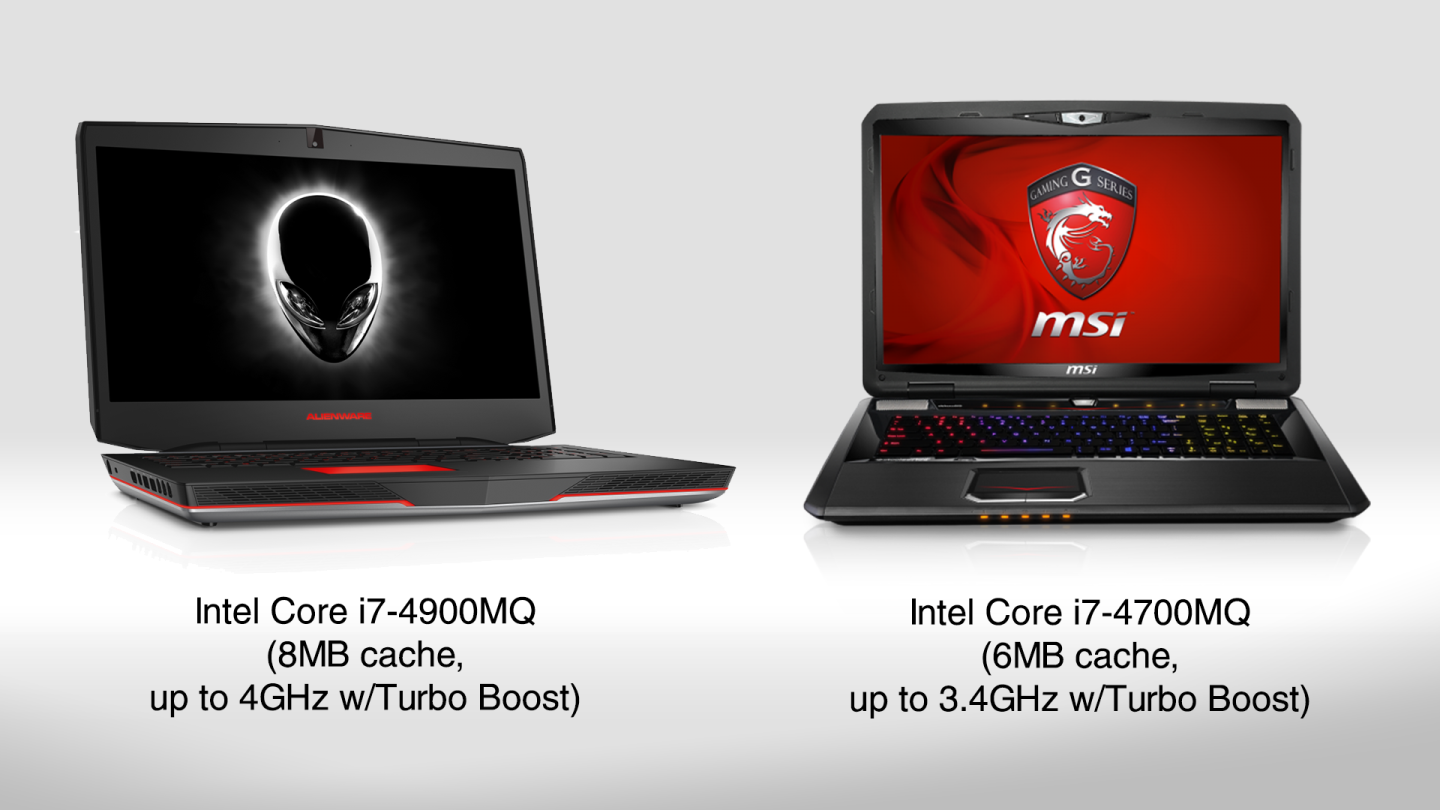
The Alienware 17 takes an early lead, offering a more capable Intel Core i7 processor than its rival. Neither option is a slouch, but the MSI system’s chip does have a lower clock speed and smaller cache than the Dell machine.
It’s worth noting that both manufacturers offer a range of different configurations for their machines. However, while it’s possible to configure an Alienware 17 with a Core i7 4700MQ like that found on the GT70, MSI’s machine tops out with that chip, with no option to equip it with more powerful processors.
Our decision to look at the Core i7 4900MQ-equipped Alienware 17 is designed to represent this imbalance between configuration options. More on this later.
Display

As would be expected at this price point, both machines feature full 1920 x 1080 displays.
Graphics
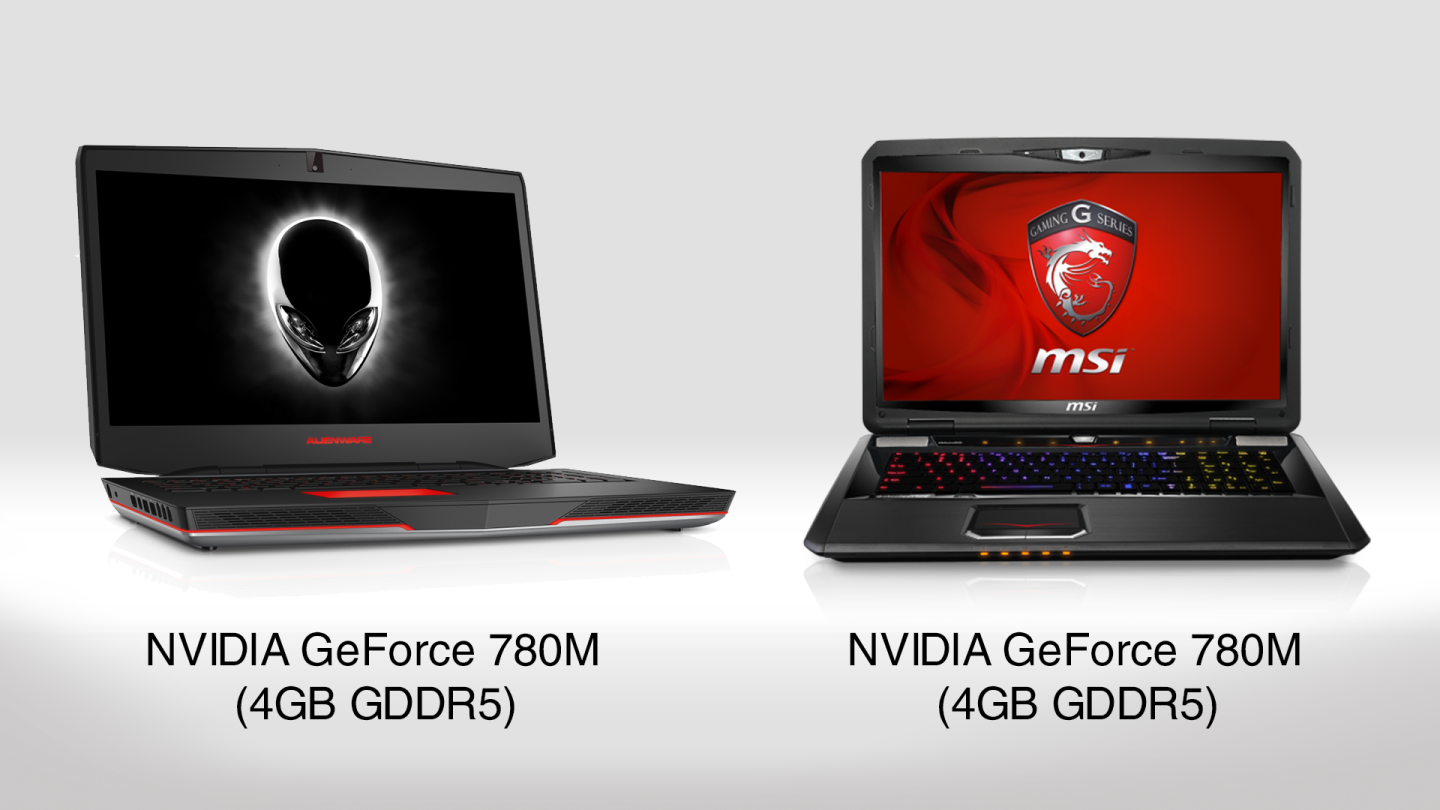
Perhaps the most important category for a gaming machine, both the MSI and Alienware machines boast powerful NVIDIA GeForce 780M cards with 4GB of GDDR5 memory.
Though mobile graphics solutions rarely boast the raw power of desktop configurations, the 780M is one of the more potent cards in NVIDIA’s arsenal and, paired with a capable processor, should keep even the most recent titles running smoothly.
NotebookCheck provides a detailed look at the 780M’s performance. If you’re considering purchasing either of these systems, it’s worth checking out.
RAM
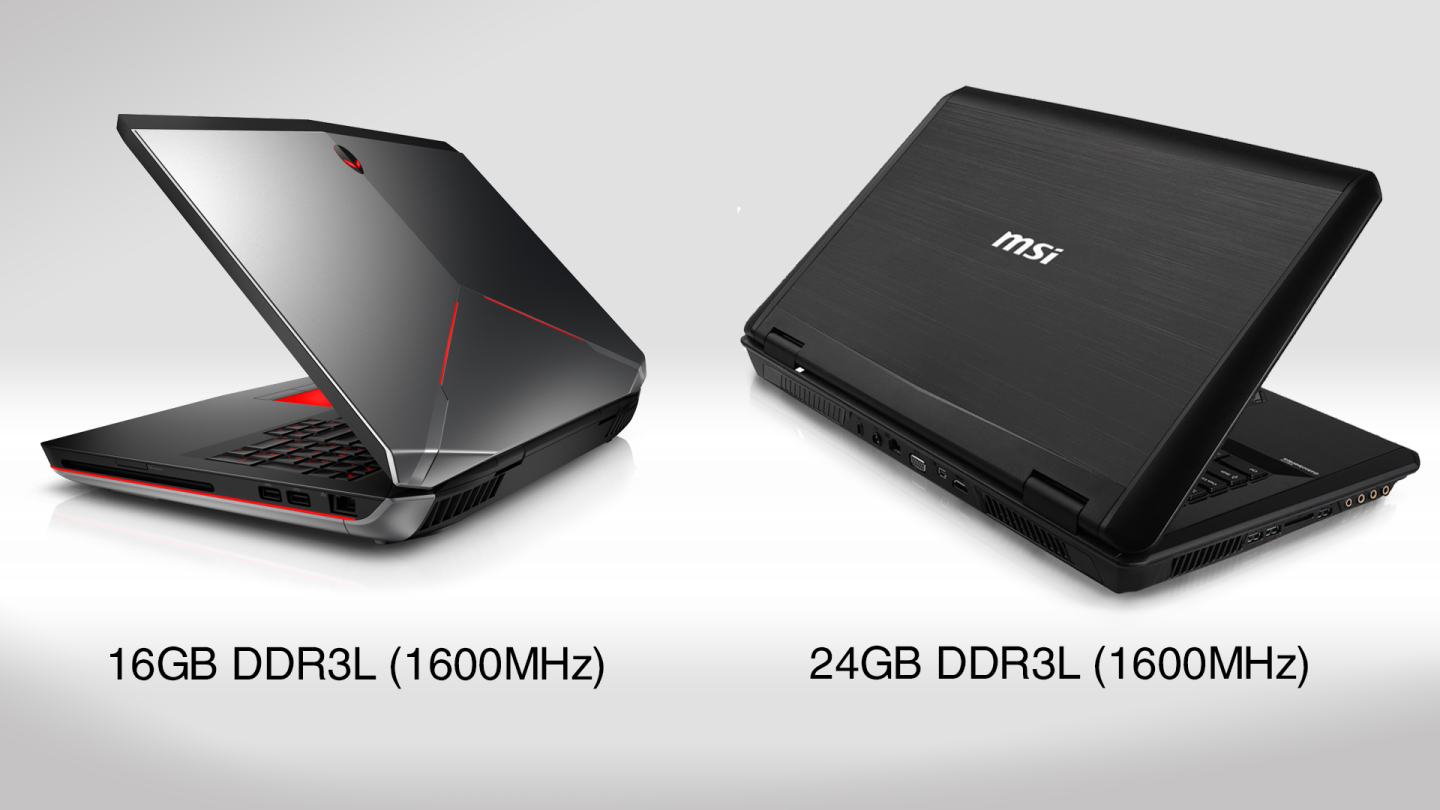
In these configurations, the MSI GT70 wins, providing a full 8 GB more RAM than its rival. It’s worth pointing out that a lot of capable gaming rigs make do with just 8 GB memory, making both the Alienware’s 16 GB and MSI’s 24 GB offerings generous.
That said, the GT70’s extra RAM will help it hold onto those buttery smooth frame rates during extended play sessions.
Storage
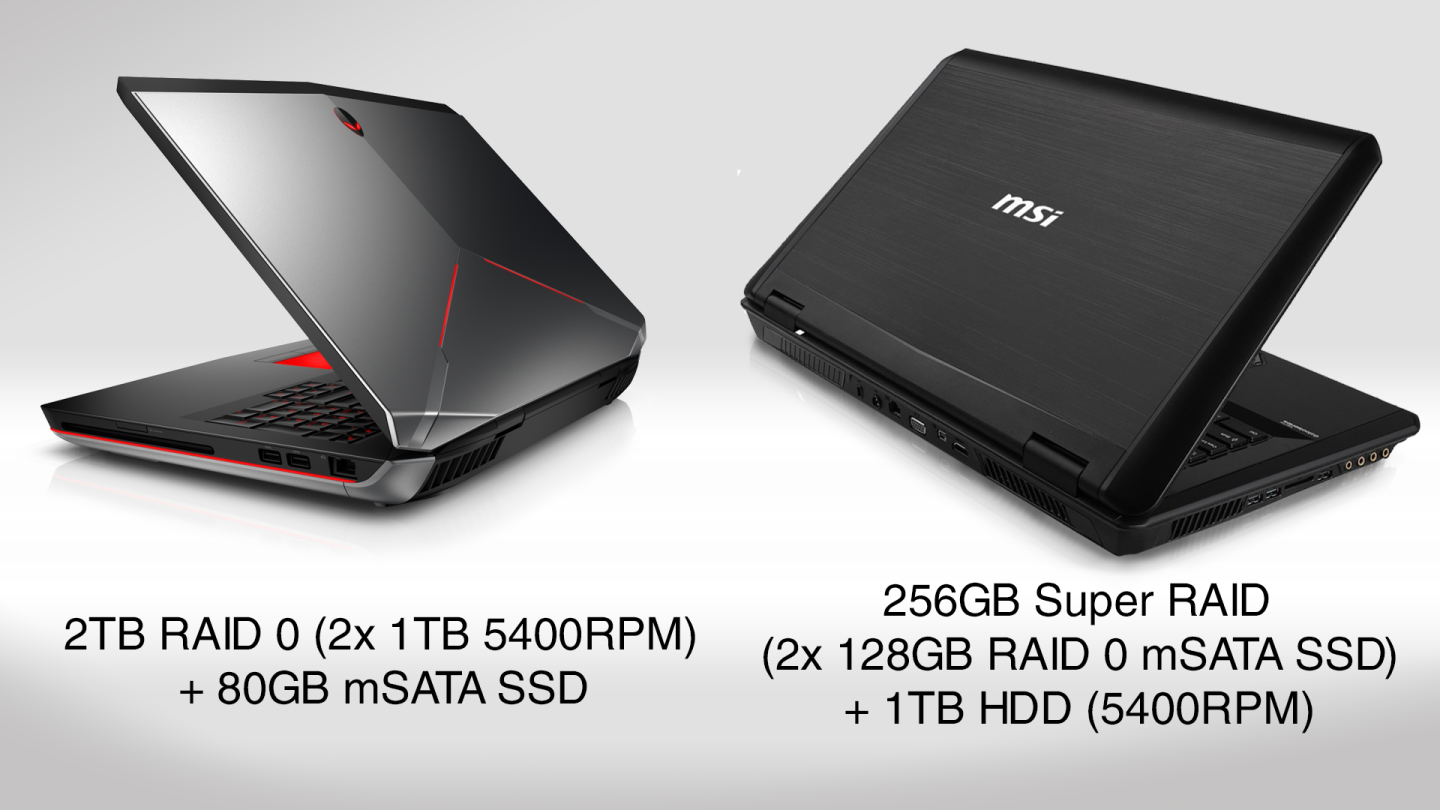
Dell and MSI have opted for two very different storage configurations here. Both machines feature RAID setups, a method of using two hard drives in tandem to provide either faster (RAID 0) or more secure (RAID 1) storage configurations when compared to traditional single HDD builds.
Though both systems feature RAID 0 setups, the MSI machine employs what the company calls Super RAID technology that uses two small SSD drives rather than more conventional hard drives found in the Alienware setup. The SSD RAID setup should translate to faster storage on the MSI system.
At 2 TB, the Alienware’s RAID setup is much larger than the MSI machine, and is backed up by a small 80 GB SSD drive to keep things running fast. In contrast, the GT70 features just 256 GB of SSD RAID storage, but also provides a 1 TB HDD.
Both these methods have their benefits, but if pushed we’d recommend the GT70’s setup with its larger and faster SSD storage capacity.
Ports
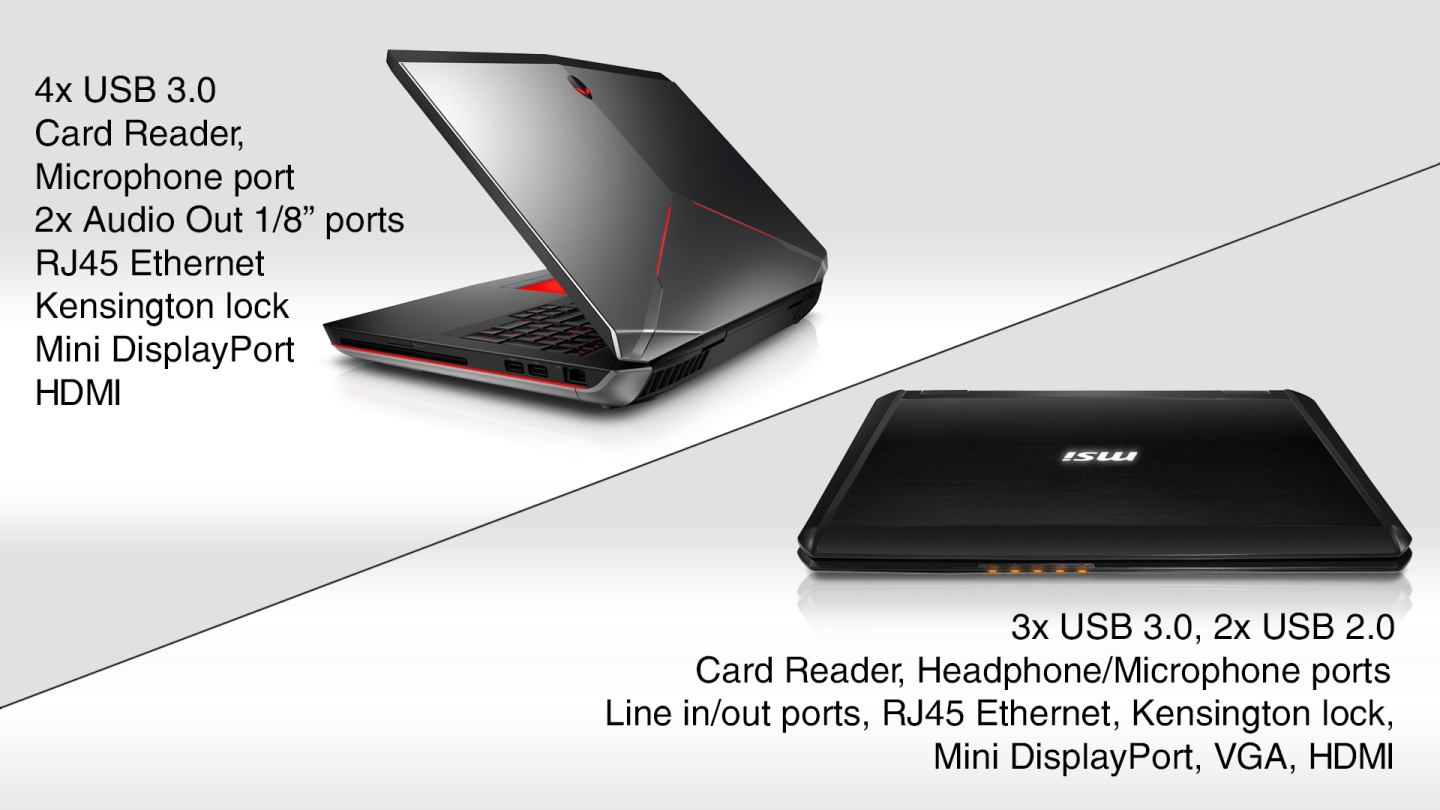
Both laptops have a wide range of ports, and there’s no clear winner here. The GT70 provides a larger number of USB ports but offers less of the faster 3.0 variety. The MSI’s VGA connector just pushes it ahead of the Alienware.
Battery

The MSI GT70 has a slight edge when it comes to battery capacity. Without extensive time with both machines, and given the range of hardware configurations available, it’s difficult to provide reliable battery life estimates here. That said, it’s fair to say that neither system is going to be a road warrior.
OS and disk drive

Dell provide a choice of Windows 7 or 8, while the MSI machine is only available with the more recent OS.
The Alienware 17 comes fitted with a Blu-ray reader, while the MSI goes one step further, providing a drive capable of burning disks.
Dimensions and design
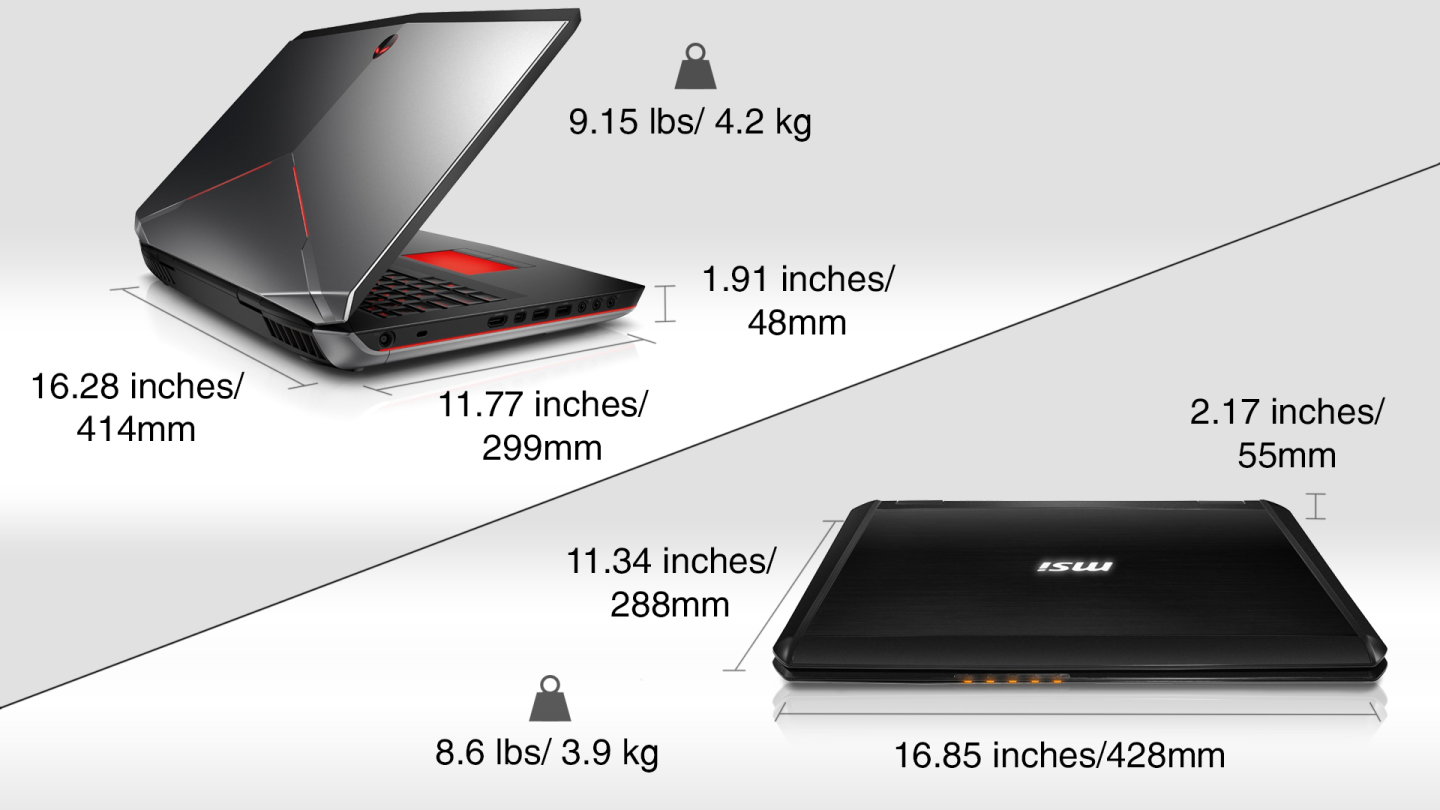
Being gaming laptops, both machines have large footprints, and in reality you’re likely to be using them on a table or desk rather than on your lap. The systems have similar dimensions, and though the Alienware model is slightly thinner than its rival, the MSI is actually a little lighter.
There’s a lot more between the machines when it comes to aesthetics. The Alienware 17 is a slicker looking laptop than the GT70, exhibiting the same design language as the rest of the Alienware family. We wouldn’t go so far as to call the GT70 ugly, but it’s clear that MSI has put looks second here.
The rest

There are one or two other things that set the two laptops apart. Both machines come with color backlit anti-ghosting keyboard, with the Alienware featuring programmable AlienFX lighting throughout.
The Alienware system comes fitted with a 2 MP webcam to the MSI’s 1 MP offering, though the GT70 does feature Dynaudio speakers.
Price
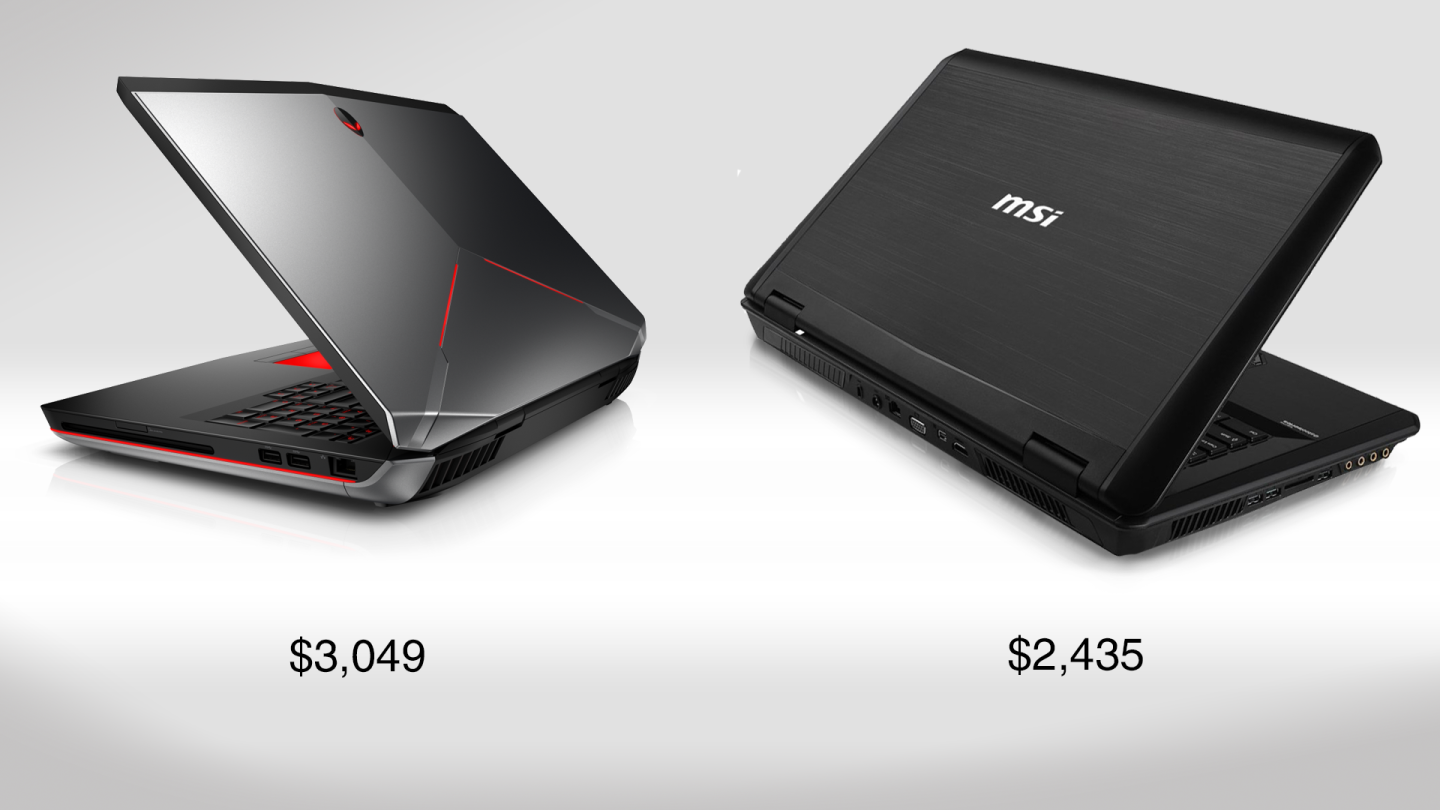
The difference in price between the two configurations detailed above is more significant than you might expect, with the Dell machine coming in almost US$600 higher than the MSI. Prices are correct at the time of writing.
Wrap-up
There are a lot of caveats here, but generally speaking, the MSI machine is a better value for money proposition. If, for example, you configure the Alienware 17 to the same processor and GPU spec as the GT70 build detailed here, but with 8 GB less RAM and a regular HDD-only storage setup, it comes in at $2,499. That's still more than the more capable MSI build.
It’s clear that more thought has gone into the looks of the Alienware machine, and the Dell system offers far more configuration options that the MSI laptop.
Buying direct through the Dell website, it’s possible to configure the Alienware 17 to feature an Intel Core i7 4930MX chip, 32 GB RAM and even a 768 GB RAID 0 HDD and 256 GB SSD setup. But hardware choices like that will push the price tag way past the $4,000 mark, making it difficult to recommend over other systems such as the beefier Alienware 18, which offers dual NVIDIA GeForce 780M GPUs.
Even with the greater choice of internals that Dell provides for the Alienware 17, if you’re looking for a powerful 17-inch gaming laptop, don’t have bottomless pockets and aren’t overly concerned about the system’s aesthetics, then the MSI GT70 2OD is the better option.
If you’re in the market for a gaming laptop, then be sure to check out our 14-inch and 17-inch thin-and-light comparisons.















